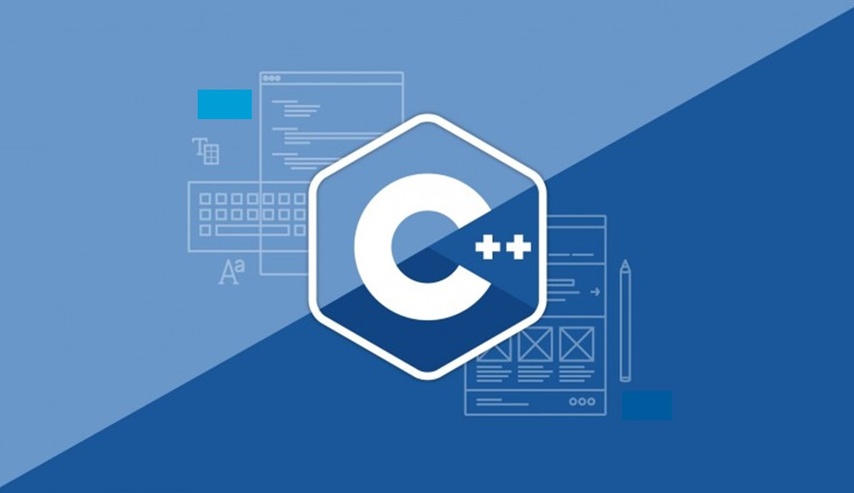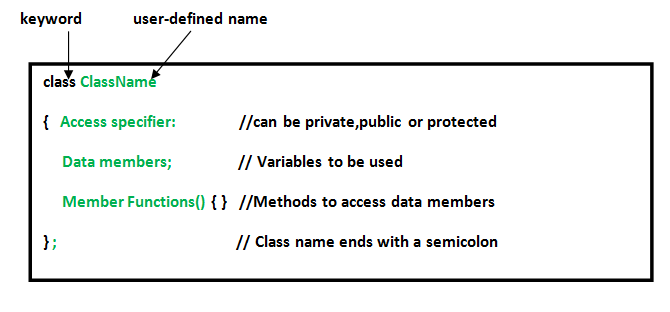- Return type for functions probably best to be
voidas it doesn't expect a return type.
#include "../log.h"// (Best use for everything) Relative to current file#include <log.h>// ()Does not need to be relative
if you include:
using namespace std;
then you don't need to do things like std::cout just cout
- If your function is below
mainor in another folder you should specify it in the include section i.e.
#include <string>
using namespace std;
int addNumbers(int num1, int num2);
Alternatively you can include header files :
- Add the function declaration (just function header no body in the .h file
- Reference the .h file in your code i.e
#include log.h - Ensure
#pragma onceis included as it will fail to compile where duplicate lines exist especially with structs etc - Alternatively in your logfile, you can check if something has been defined already
#ifndef _LOG_H
#define _LOG_H
void initLog();
#endifstring mystring = "Adam";
mystring.len()
mystring.find("d",0);
mystring.substr(1,3);
cin >> age
cout << age ;
// get string input
getline(cin,name);
cout << "hello " << name;
cout << "My name is " << characterName << endl;A dynamic array you don't need to populate up front.
#include <iostream>
#include <string>
#include <vector>
using namespace std;
int main()
{
// VECTOR
vector<string> friends;
friends.push_back("Oscar");
friends.push_back("Angela");
friends.push_back("Kevin");
friends.insert(friends.begin() + 1, "Jim");
// friends.erase(friends.begin() + 1);
cout << friends.at(0) << endl;
cout << friends.at(1) << endl;
cout << friends.at(2) << endl;
cout << friends.size() << endl;
return 0;
}
int mynumbers[] = {4,5,6,7};
// empty array
int mynumbers[20];mynumbers[4] = 8;PROS
- Fast to start
- Shares mem
- Unlike multiprocessing, all bloat isn't needed to prevent them stepping on each others toes
- Low overhead
CONS
- Difficult to implement
- Can't run on distributed system
#include <thread>
#include <iostream>
using namespace std;
// FUNCTION WE WISH TO THREAD
void function_1(){
std::cout << " a random print statement" << std::endl;
}
int main(){
std::thread t1(function_1); // t1 starts running
// DEPENDENT
t1.join(); // main thread waits for t1 to finish
// DEAOMON PROCESS
// DETACH means it runs freely (main wont wait)
// If you ran this, it wouldn't print beause main finishes first
t1.detach();
return 0;
}
#include <iostream>
#include <string>
using namespace std;
/// -----------------USING POINTERS
int main(){
int num = 10;
cout << &num << endl; // get address
int *pNum = # // reference Pointer = address of num var
cout << pNum << endl; // Prins out the saved pointer
cout << *pNum << endl; // Actually prints out the physical pointed value
return 0;
// POINTER IS JUST A VARIABLE THAT ALLOWS YOU TO STORE AN ADDRESS
}
// DECLARE THREAD
std::thread t1(function_1);
// JOIN
t1.join();
// DETACH
t1.detach();
// Check detached
if (t1.joinable())
t1.join();
COMPARING PRIMATIVES
The most efficient mechanism in both memory use and execution time. The basic use of a mutual exclusion lock is to serialize access to a resource.
The basic use of a condition variable is to block on a change of state; that is it provides a thread wait facility. Remember that a mutex lock must be acquired before blocking on a condition variable and must be unlocked after returning from pthread_cond_wait(). The mutex lock must also be held across the change of state that occurs before the corresponding call to pthread_cond_signal().
The semaphore uses more memory than the condition variable. It is easier to use in some circumstances because a semaphore variable functions on state rather than on control. Unlike a lock, a semaphore does not have an owner. Any thread can increment a semaphore that has blocked.
The read-write lock permits concurrent reads and exclusive writes to a protected resource. The read-write lock is a single entity that can be locked in read or write mode. To modify a resource, a thread must first acquire the exclusive write lock. An exclusive write lock is not permitted until all read locks have been released.
make myprogram.cpp
./myprogram.cpp
string characterName = "Adam";
int characterAge = 35;cout << "My name is " << characterName << endl;
cout << "My name is " << characterName << "\n";
int main(){
// S T R I N G S
string greeting = "hello";
cout << greeting.length();
cout << greeting[0];
cout << greeting.find("llo") << endl;
cout << greeting.substr(2) << endl;
cout << greeting.substr(1,3) << endl;
return 0;
}
Functions
string mystring = "Adam";
mystring.len()
mystring.find("d",0);
mystring.substr(1,3);
string name = "Mike";
char testGrade = 'A';
// Numbers
int age = 20; // 16 bit signed
short age = 10; // 16 bit at least signed
long age = 44; // at least 32 bit signed
long long age 40; // at least 64 bit signed
bool isHungry; // true/false
isTall = true;
int volume = 10.2; // double
cout << (int)volume


